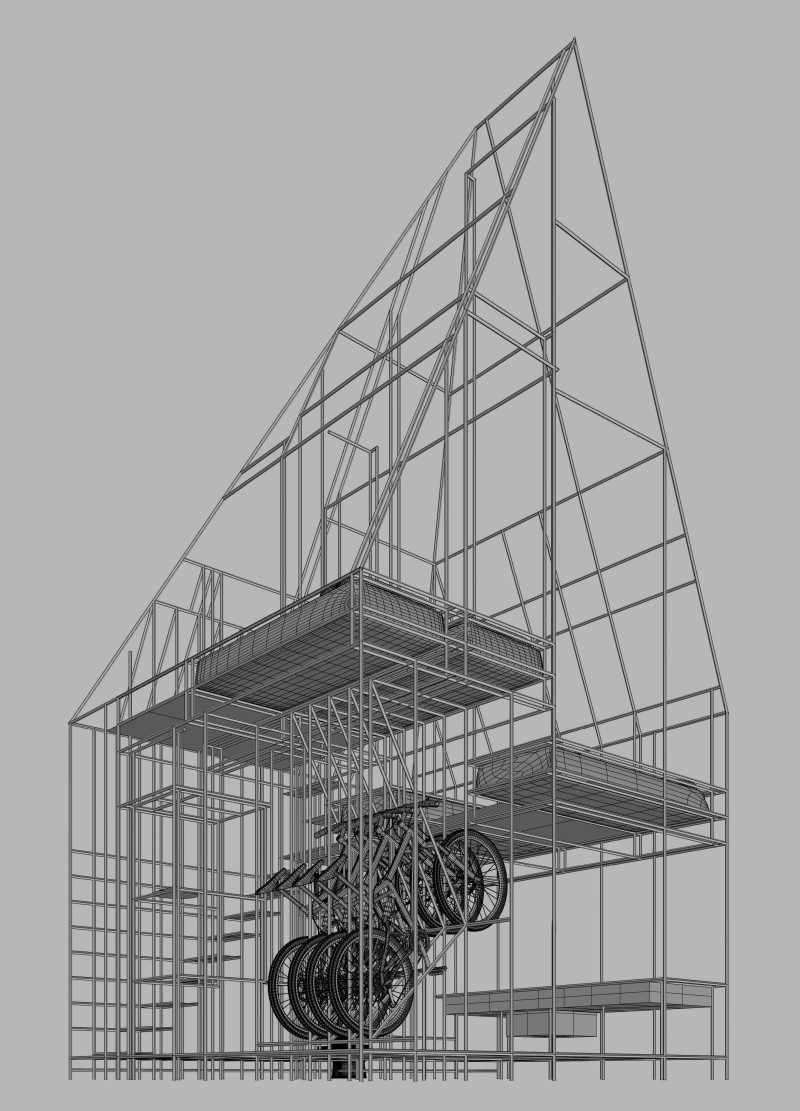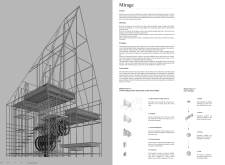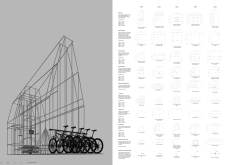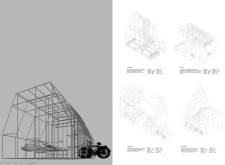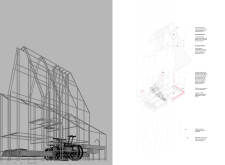5 key facts about this project
"Mirage" is an architectural project characterized by its modular design and adaptability to varying urban contexts. The project presents a series of multifunctional structures known as Volcaps. These structures are crafted to function efficiently in a range of environments, making them suitable for diverse user needs. The design reflects a deep understanding of the surrounding landscape and integrates seamlessly into its urban fabric.
The architecture of "Mirage" stands out for its innovative use of materials and responsive design principles. It employs a steel frame that provides both structural integrity and aesthetic clarity while incorporating translucent plastic elements that enhance natural light penetration. The use of wood in non-structural applications introduces warmth to the interiors. This blend of materials illustrates a commitment to sustainability while reinforcing the project's functional aspects.
Unique Design Approaches
One of the distinguishing features of "Mirage" is its modularity. This approach allows for flexible configurations that can be adjusted to meet the specific requirements of various functions, ranging from communal gatherings to individual workspaces. The design encourages exploration and interaction within its environment, fostering a sense of community.
Further, the architecture incorporates local design philosophies and cultural references, bridging global trends with regional identity. The Volcaps draw on recognizable forms in European architecture, ensuring a connection with historical context while addressing contemporary needs. This balance of innovation and tradition sets "Mirage" apart from standard architectural projects, resulting in a structure that is both functional and contextually relevant.
Functional Integration in Design
The functional aspects of "Mirage" extend beyond mere shelter. The project encourages a lifestyle that promotes learning and environmental responsibility. It creates opportunities for workshops and community activities, effectively transforming the space into an educational platform. This integration of function and design enhances user engagement and nurtures a sense of ownership among occupants.
Additionally, the architecture is designed to interact with its urban surroundings. The circulation paths between the Volcaps facilitate movement and connection, allowing for different configurations based on social or environmental dynamics. The design supports the idea that architecture can be a catalyst for community interaction and cultural expression.
For a comprehensive understanding of "Mirage," readers are encouraged to explore the architectural plans, sections, and design elements further. An in-depth review of the architectural ideas and their implementation will provide valuable insights into the project's unique characteristics and potential impact on contemporary architecture.


